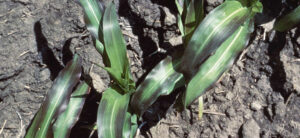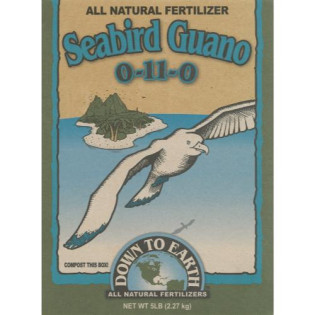
As one of the 17 key nutrients necessary for plant growth, phosphorus is essential for plants.
The functions of phosphorus cannot be performed by any other nutrient, and without phosphorus, your plans will fail to grow and reproduce as they should.
Second only to nitrogen, phosphorus is the most essential nutrient to guarantee optimal growth, health, and function of our plants. It is one of the key elements required for just about every plant.
Phosphorus a mobile element which means that if a plant is deficient, it will transfer phosphorus from other parts of the plant to areas it needs it in.
Phosphorus is one of the three main macronutrients most often found in fertilizers and amendments. Without adequate amounts of phosphorus, your plants will never flower to their full potential.
What is the Importance of Phosphorus for Plants?
Phosphorus is essential for plants to transport the energy they produce from light during photosynthesis throughout the plant. It is one of the main components of plant DNA and plants generally have higher concentrations in root tips, growing shoots, and vascular tissues.
Phosphorus is vital for hardy growth of the plant and its vital to healthy root development and plant cell activities. It also effects germination, and bloom production.
Phosphorus is found in a plant’s nucleic acids and is essential for stalk & stem health. It also plays a role in forming healthy roots (which is why it is important for root vegetables in particular).
Phosphorus needs change as your plants mature. When they are first developing, phosphorus helps to stimulate root development.
It’s necessary for photosynthesis and also to help your plant store and transport nutrients. Phosphorus helps your crops mature at the right time.
If your plants lack phosphorus, they will take longer to mature and they won’t bear high-quality seeds, fruits, and flowers.
Mature plants that contain adequate amounts of phosphorus will also be able to resist disease more easily than those that do not.
Different Sources Of Phosphorus For Plants
Phosphorus is a naturally occurring compound that has a long history of human use. Some forms of phosphorus occur naturally, while others have been commercially produced.
You can acquire phosphorus for your plants in several different ways. The nutritional value of each can vary, so it’s important that you do your research to make sure the type that you use is appropriate for your plants.
Although bone meal can contain up to 27% phosphorus, this can vary based on the age, decomposition rate, and method of application of your fertilizer.
Furthermore, access to water and sun, along with soil type and the presence of microorganisms, can affect how well your plants uptake this vital nutrient, too.
The most common sources of phosphorus for plants include bat guano, bone meal, crab and shrimp waste, and phosphate rocks.
Bat Guano
Bat guano has a high phosphorus content and is best used as an amendment that is dug in around the plant or watered in as a tea.
It is organic, making it a suitable method for organic growers. It can be somewhat expensive, however.
Bone Meal
Bone meal is much more affordable and readily available. It is also an organic amendment and leaches slowly into these soil, releasing phosphorus for up to four months after its initial application.
It can be especially beneficial when you are adding high-nitrogen amendments to the soil, such as manure, helping to balance out the various nutrients.
Crab Meal
Also known as crab or shrimp meal (or even shellfish fertilizer), crab and shrimp waste is another great option for fertilizing the garden with phosphorus.
Usually, you’ll be using the shells of these creatures to fertilize your plants, but other kinds of processing waste can be used, too.
It’s important to note that these tend to be high in nitrogen. They are often mixed with wood shavings or bark to help balance out their potency and are allowed to compost over the course of several months.
Crab and shrimp waste is high in nitrogen, as mentioned, but it also contains lots of phosphorus, magnesium, and calcium. This makes it a great general-purpose fertilizer.
Some mixtures also contain ample amounts of potassium. This kind of fertilizer can be hard to come by, but it’s great for improving soil fertility and microbial activity.
Phosphate Rock
Phosphate rock is a combination of calcium and phosphorus.
This nutrient is mined all around the world, with each mixture containing a slightly different chemical composition.
You should not use this nutrient if your soil has a pH above 7 (it is alkaline). Phosphate, however, is a popular source of phosphorus because it is cost-effective and contains other nutrients that your plants need, like calcium and magnesium.
Know What Is In Your Soil Before Feeding Phosphorus To Your Plants
Test the growing medium to see what nutrients your plants are lacking. Otherwise, you risk overfeeding your plants.
There are some plants that don’t need a lot of phosphorus, either. For example, grass and grass-like plants don’t produce fruit or flowers.
Therefore, adding more phosphorus would be detrimental to their growth. It can go so far as to burn your grass, too.
Let's talk a bit about phosphorus toxicity.
Phosphorus Toxicity
Overfeeding phosphorus is relatively uncommon, but it can lead to a variety of problems.
Too much phosphorus can harm the development of soil organisms known as mycorrhizal fungi. These have a symbiotic relationship with your plants’ roots and are necessary for healthy plant growth.
If your plants have been exposed to too much phosphorus, the telltale sign will be in the leaves. They may become spotted and dead-looking.
Interestingly, phosphorous deficiencies can affect the availability of zinc and copper, so you might only realize your plant is deficient in phosphorus when it starts to show signs of zinc and copper deficiency.
These symptoms could include dark, twisted leaves, chlorosis, and decreased yields.
What To Do If You Apply Too Much Phosphorus?
First, stop adding phosphorus obviously. You should flush your plants with 3 gallons of water per gallon of grow media, or use a flushing agent.
This will remove excess phosphorus from the soil, and allow you to start again.
In hydroponic systems, drain off some of the phosphorus-rich water. Replace it with pure water pH'd to between 6.0-6.7 in order to restore balance.
Identifying Phosphorus Deficiency In Plants
Phosphorus deficiency results in stunted growth similar to nitrogen deficiency. Plants remain a very poor size. Leaf color appears to change from normal to dull dark green, or bluish green, with a purplish color of the petiole (leaf stem) and veins on leaves.
The older leaves, located near the bottom of the plant, will be the first to show signs of a phosphorus deficiency, gradually moving upwards to new growth.
In fruit bearing plants and plants that bloom, flowers may still be produced, but any blooms will be smaller, and in less abundance. Leaves may also begin to curl downward, in extreme cases they will become necrotic and fall off.
- Leaf and plant growth stunted
- Dark green leaves sometimes accompanied by purplish leaves and stems
- Hard or brittle stems
- Stunted root growth
- Spots may appear on leaves
- Leaves may curl under
Examples Of Phosphorus Deficiency
These images below show plants suffering from a phosphorus deficiency. Notice the purple leaves on the left side, which some growers may see and be excited about due to bag appeal. the reality is, it could be phosphorus deficiency.
The leaf on the right shows another example of P deficiency. The dark green coupled with a rusted look and spots indicates a phosphorus deficiency.
How To Correct Phosphorus Deficiency
A phosphorus deficiency is compounded by cold conditions or excess iron in the grow medium. One of the first things to take a look at is pH balance, in both soil and hydroponic growing systems.
A pH imbalance will block nutrient uptake through the plant’s roots. It is important to regularly check the pH, and to be sure to keep the pH within the appropriate range.
As a general rule, if growing in soil, nutrients will be absorbed by your plant the best if it is at a pH level between 5.5 and 6.5. In hydroponic systems, a pH range between 5.8 and 6.2 has proven to be ideal.
In this range, the nutrients present are easily taken up through the plant’s root system.
When the pH level is outside of this range, even when the proper nutrients like phosphorus are present, they are not able to be absorbed by the plant. Check out our guide on the relationship between nutrients and pH for a more in-depth look.
Supplement with phosphorus rich fertilizers
If your pH balance is at the appropriate level and you are still seeing a phosphorus deficiency, add plenty of fertilizer with high concentrations of phosphorus.
We already mentioned some of the best sources of phosphorus for plants:
- Crab meal
- Bone meal
- Bat guano
- Phosphate rock

How Do I Know Which Fertilizers Or Amendments Contain Phosphorus
NPK numbers usually appear prominently on fertilizer indicating the amount of nitrogen, phosphorus, and potassium respectively that the fertilizer contains.
In the example image above, the fertilizer has an NPK ratio of 12-0-0. This indicates that the fertilizer is high in nitrogen (12) but contains no phosphorus (0) or potassium (0). Other sources of phosphorus are bat guano, bone meal, and barnyard manure.
Compost teas can be used in conjunction with a regular feeding program of a fertilizer that contains adequate amounts of phosphorus suitable for the stage of plant growth.
If you aren't sure be sure to consult the product MSDS sheet to find out what it contains or contact our helpful experts.
Final Thoughts On Phosphorus For Plants
It can be tough to spot the signs of phosphorous deficiency (toxicity is much easier to detect), but often, you’ll know that your plants are deficient in phosphorus when they fail to grow to their normal size.
Of course, this sign can be difficult to spot, as it could be related to a whole host of other issues, too.
To play it safe, always test your soil or growing medium before you plant so that you know your plants have all the nutrients they need for good health.
If you want to learn more, read our entire nutrient deficiency series.






















